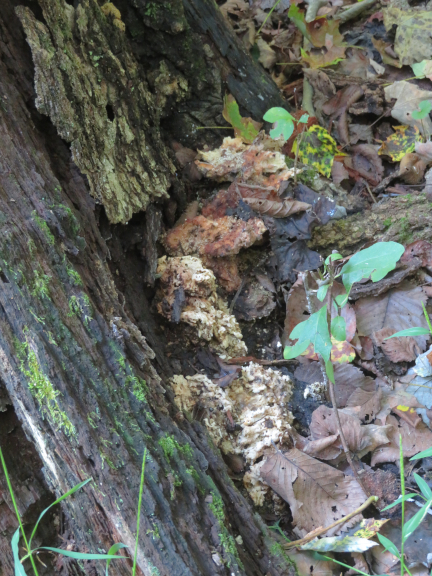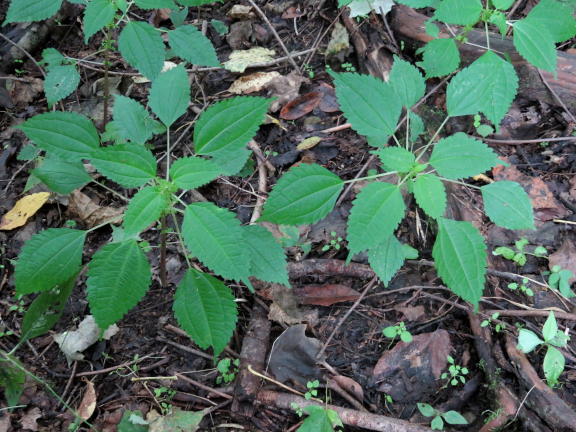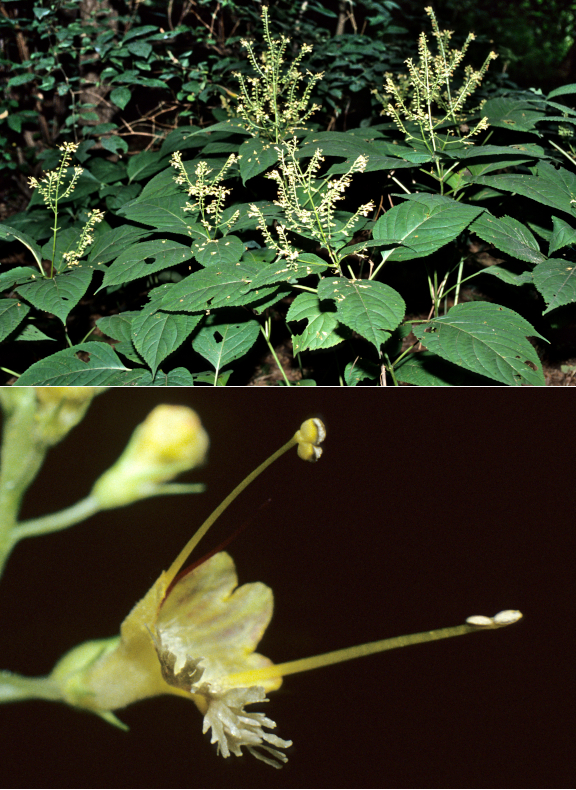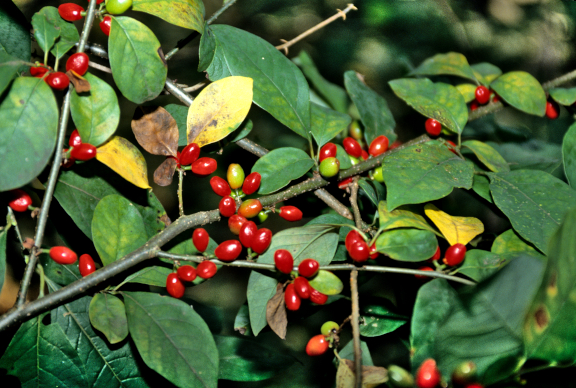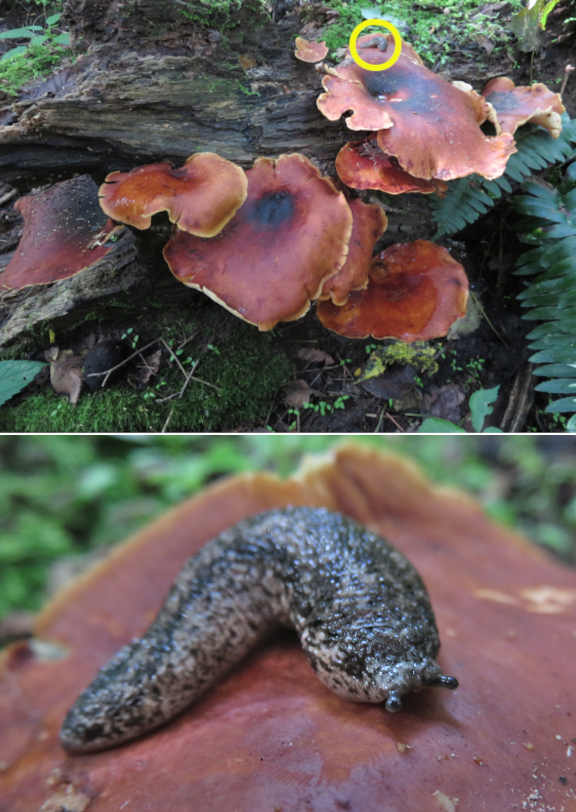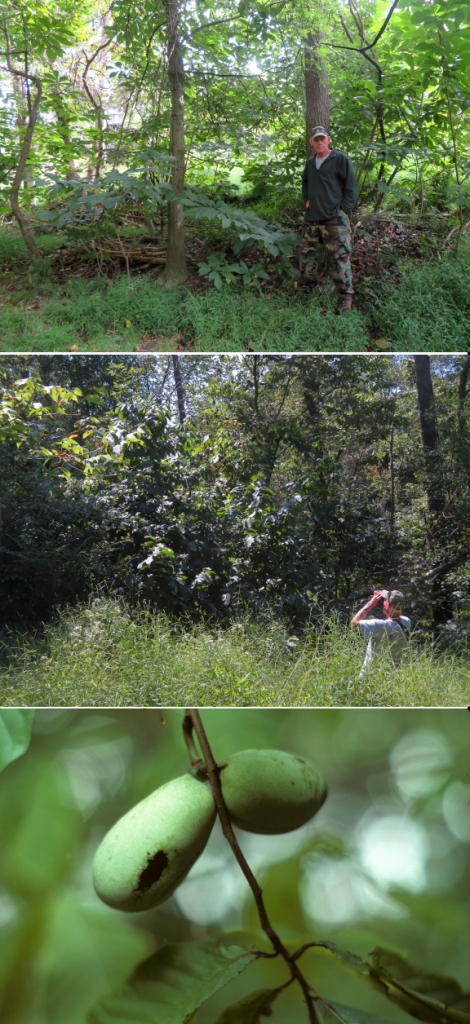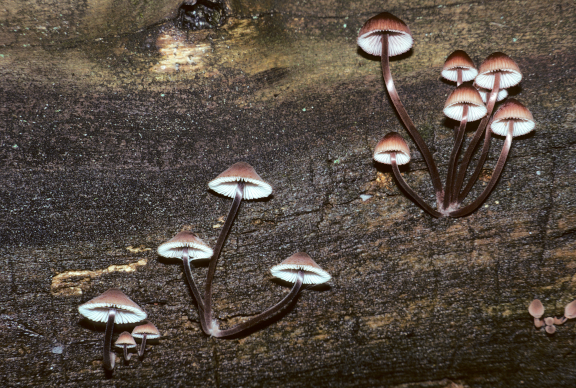Jan and I travel a lot presenting programs, offering workshops, and leading field trips at some of West Virginia’s most beautiful and pristine natural areas. But we also love being home. We enjoy our property. Since 2010 one of our goals has been to make our property attractive to wildlife and to ourselves. To achieve that goal, there is work to be done, which we usually view as an enjoyable way to get the exercise which enables us to be fit for hiking and teaching.
One morning, my first work was to inspect the trees in my arboretum while Jan cleared the driveway.
The Franklinia Tree (𝐹𝑟𝑎𝑛𝑘𝑙𝑖𝑛𝑖𝑎 𝑎𝑙𝑎𝑡𝑎𝑚𝑎ℎ𝑎) (https://en.wikipedia.org/wiki/Franklinia) in our arboretum had grown well this year. The Franklinia tree is native to North America, but is no longer found anywhere in the wild. Arboretums and growers are making sure this rare species survives.
After our “work” was done, we talked a bit about what’s happening in nature this time of year. It’s such a bountiful and beautiful time, so we decided to explore some nearby areas in West Liberty and Oglebay Park to see if we could find some Pawpaws (𝐴𝑠𝑖𝑚𝑖𝑛𝑎 𝑡𝑟𝑖𝑙𝑜𝑏𝑎) and Hen-of-the-woods/Maitake mushrooms (𝐺𝑟𝑖𝑓𝑜𝑙𝑎 𝑓𝑟𝑜𝑛𝑑𝑜𝑠𝑎). I have lived and worked in those places most of my adult life and already knew where to look, which would make things easier.
The Hen-of-the-woods mushrooms grow at the base of oak trees, usually very old oak trees. I knew where there were dozens of giant oak trees, some of which had provided many delicious meals in the past. These mushrooms can be very large, but are often difficult to notice because they are well-camouflaged like the ones below which I had found in the past.
We checked trees at West Liberty and Oglebay, but all we found was one well-rotted Hen.
Seeing these old, giant oaks we couldn’t help but appreciate them. Anything that old and that large is very special.
At Oglebay the oaks were often far from one another and so we took numerous short hikes between trees. We encountered and photographed many other fun creatures.
We noticed two White-tailed Deer in the grass. Jan wanted to see how close she could get to take the best photo. She got surprisingly close.
Some of the native herbaceous plants we saw were in flower, some had fruit that was ripening, and some had already dropped their seeds.
Although we didn’t see many birds, we did hear a few in most locations. At many of our stops we heard Red-bellied Woodpeckers.
The only butterfly we noticed was a Northern Pearly-eye (𝐸𝑛𝑜𝑑𝑖𝑎 𝑎𝑛𝑡ℎ𝑒𝑑𝑜𝑛).
My favorite encounter was a Great Gray Slug (𝐿𝑖𝑚𝑎𝑥 𝑚𝑎𝑥𝑖𝑚𝑢𝑠) sliding on a Black-footed Polypore (𝑃𝑜𝑙𝑦𝑝𝑜𝑟𝑢𝑠 𝑏𝑎𝑑𝑖𝑢𝑠).
The three Pawpaw groves I wanted to check were in Oglebay Park. As we searched the first grove, we stumbled onto the old “Children’s Grove” bronze plaque. I had regularly seen this plaque when I worked as naturalist there, but not since then. Jan and I had looked for the plaque without luck on several occasions, and I had eventually decided the plaque had been dug up and discarded as a result of new sewer lines that had been installed throughout the park. On this visit we accidentally rediscovered it! It commemorates the first national observance of National Tree Planting Day of the American Tree Association sponsored by Oglebay Institute on May 9, 1936.
At that first Pawpaw grove, which I had planted 40 years earlier, there were no fruit this year. The second grove was taller and my careful search through binoculars found two ripe fruits high in the trees. There was one ripe fruit at the third grove. Since there were so few pawpaws this year, we decided to not take them, but to leave them for the wildlife.
As we hiked from oak tree to oak tree still looking for Hens, we saw a nice variety of other mushrooms, but nothing we wanted to bring home for dinner.
Near one old oak we discovered the unusual tree/grove below. American Basswood trees are noted for sending up numerous sprouts that surround the original tree. The one pictured below is a classic example.
We went on our exploration anticipating finding several Hen-of-the-woods Mushrooms and buckets full of Pawpaws, but found none. Our preconceived plans didn’t happen. What we did find was unexpected…. Nature’s ever-present variety of life — a wonderful SERENDIPITY that Nature is always willing to give. We came home with full hearts and well-satisfied.



